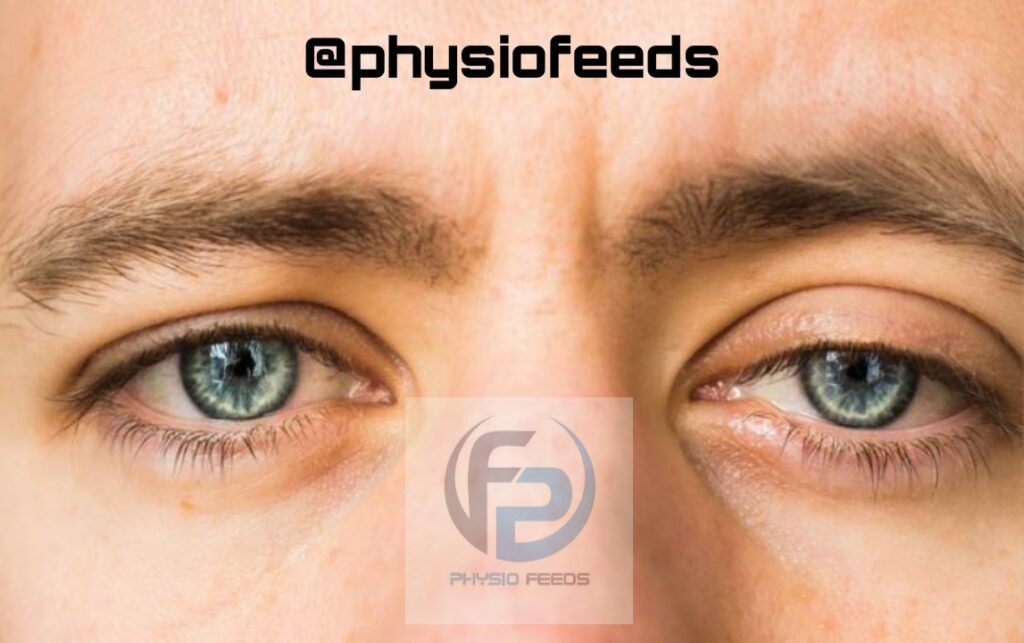PTOSIS (DROOPY EYELID)
DEFINITION
– Drooping or falling of upper or lower eyelid is called as Ptosis or droopy eyelid.

* Classification
1) Congenital
2) Acquired :
✓ Neurogenic
✓ Myogenic
✓ Aponeurotic
✓ Mechanical
✓ Neurotoxic..
(1) Congenital ptosis
– It is assoSiated with the congenital weakness of levator palpebrae superiors
a) Simple Congenital Ptosis
b) Congenit ptosis
c) Blepharophimosis syndrome
d) congenital synkinetic ptosis

(2) Acquired ptosis
– It is caused by ;
• Neurogenic :
√ innervational defects such as 3 rd nerve palsy.
√ cerebral palsy
√ horner’s syndrome
√ Multiple sclerosis
• Myogenic
√ myasthenia gravis
√ myotonic dystrophy
• Aponeurotic
√ involutional
√ post surgical
• Mechanical
√ tumor
√ swelling .
(3) Pseudo ptosis
√ Ipsilateral hypotropia
√ dermatochalasis
√ Enopthalmus
√ double elevator palsy
√ Blepharospasm
√ Brown ptosis
√ contralateral exoptalmus.
* Evaluation
– Observation of head posture
Chin elevation and frontalis overaction indicates severe ptosis.
– History
✓ Age of onset
✓ duration
✓ unilateral or bilateral
✓ diplopia
✓ Muscle weakness
✓ Muscle weakness
✓ Trauma
– Examination
✓ head posture
✓ Periocular fullness
✓ Frontalis overaction
✓ Scar mark
✓ ocular motility
✓ lid skin laxity
✓ visual activity
✓ Refraction.
– Measurements
✓ Margin reflex distance 1
✓ Margin reflex distance 2
✓ Margin reflex distance 3
✓ palpebral fissure height
✓ Margin limbal distance
– Levator function test.

A) Marcus Gunn jaw winking
– Unilateral ptotic eyelid elevation along with movement of jaw occurs due to cross innervations between the oculomotor nerve and mandibular branch of trigeminal nerve .
B) Bell’s phenomenon
– The eye moves generally upwards and outwards during eyelid closure.
– Corneal sensation test
– Corgans lid twitch sign
– Edrophonium test
– Ice test.

* Surgical management
1) Mild ptosis
• Phenylephrine ( + ve ) : mullerectomy
• Phenylephrine (- ve) : fasanella servat.
• Blepharoplasty : levator resection.
2) Moderate ptosis
– levator resection
– levator advancement
3) Severe ptosis
– Frontalis sling.

PHYSIOTHERAPY MANAGEMENT
Exercise 1 :
-Eyes are closed
– Put index fingers of each hand at the far end of each of the eyebrows, then place thumbs over the top of the cheekbones.
-Now, open the eyes wide and with the four fingers stretch the skin towards the temples.
– In this position, breathe deeply and inhale while trying to close the eyes.
Exercise 2 :
– Close your eyes tightly for about 5 seconds, then open them gradually.
-Repeat several times .
Exercise 3 :
– Place the index fingers on each eyebrows and put downward pressure.
– While applying pressure, try to raise the eyebrows and repeat for at least 15 times.
Exercise 4 :
– Position : Sitting in a chair ( back and neck upright).
– Look at the ceiling ( only with the eyes, without moving head )
-Then, start making circles with both the eyes in the direction of the needles of a watch ( perform slowly and without overstretching )
– Repeat the movement in opposite direction.
Exercise 5 :
– place several fingers of hands on each of the temples and then stretch the skin back.
– In this position, open and close the eyes quickly for about 10 to 15 times.


